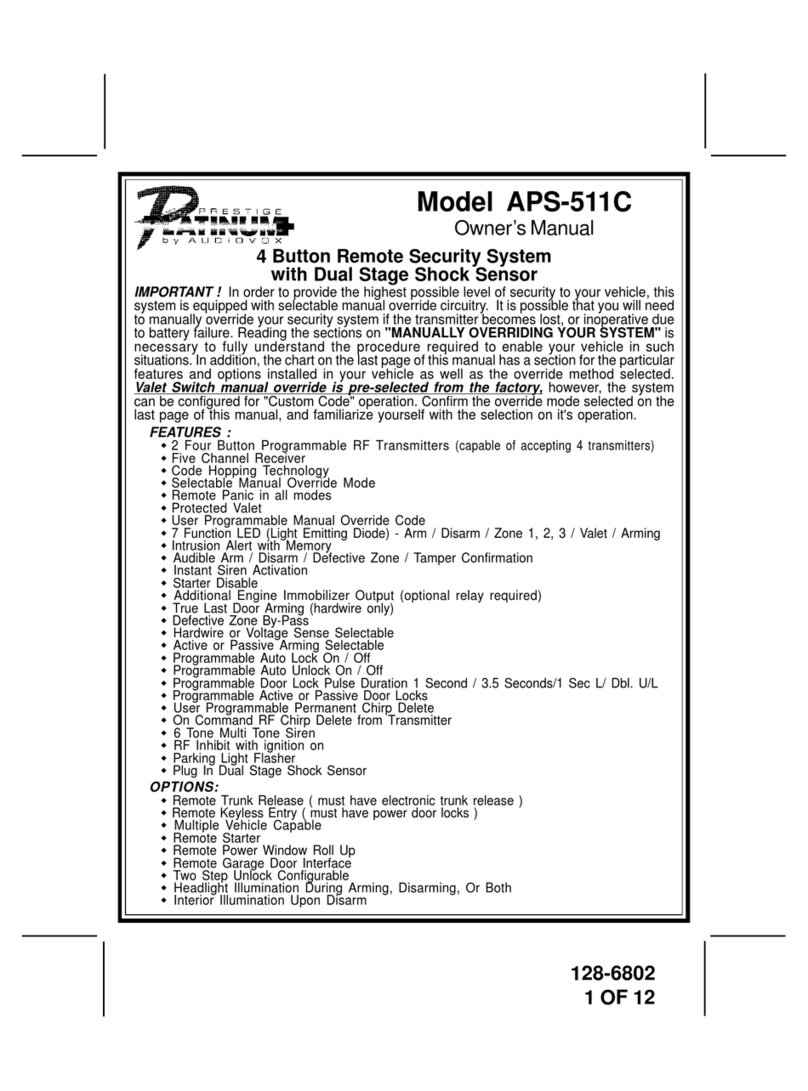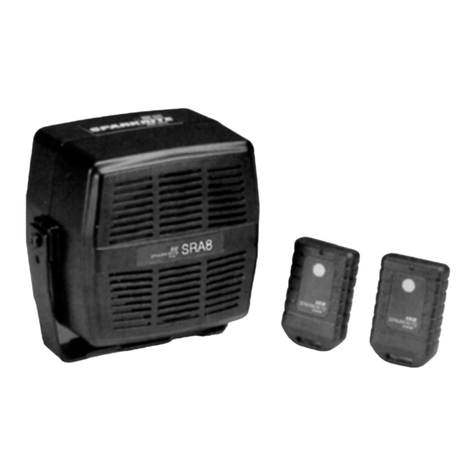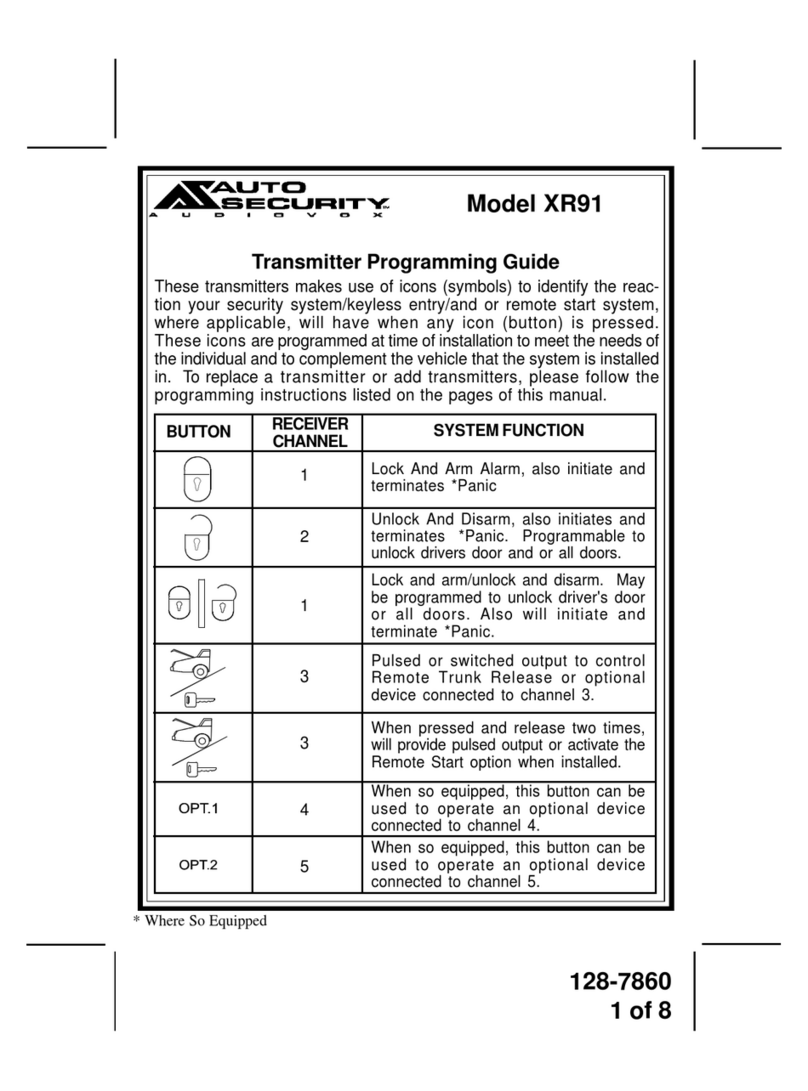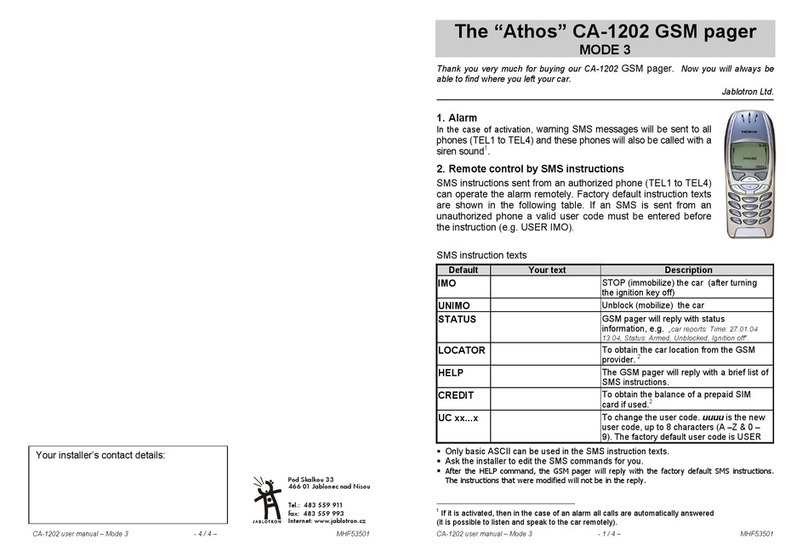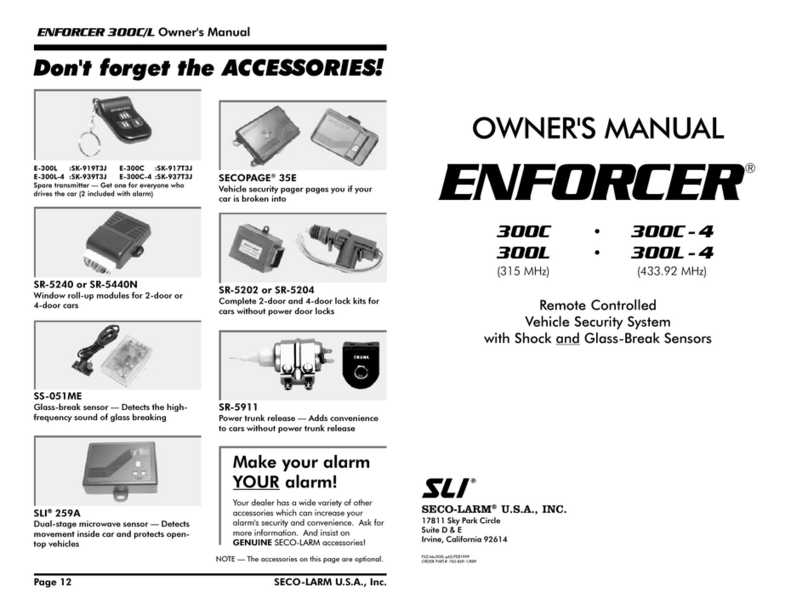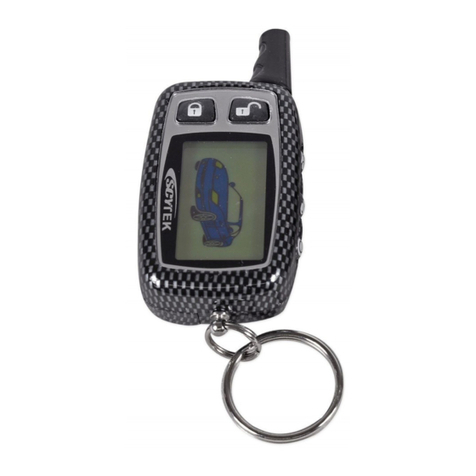Page - 2
Contents
Wiring Overview ....................................................................................................................... 18-19
Black Wire (Negative Ground) ..................................................................................................... 3-4
Red Wire (Constant Power) .......................................................................................................... 4-5
Yellow Wire (Ignition Power) ......................................................................................................... 5
Orange Wire (Starter Interrupt Output)........................................................................................ 5-7
Gray Wire (2nd Channel/Trunk Release Output) ............................................................................ 8
Brown Wire (Positive Siren Output) ........................................................................................... 9-10
White Wire (Positive Flashing Parking Light Output)............................................................. 11-13
Green Wire (Negative Door Trigger)........................................................................................ 13-15
Violet Wire (Positive Door Trigger).............................................................................................. 16
Blue Wire (Negative Instant Trigger) ................................................................................... 17 & 20
Pink Wire (3rd Channel Output) ............................................................................................. 20-21
White/Black Wire (Domelight Supervision Output) ...................................................................... 21
LED/Valet Switch Combination Assembly ................................................................................... 22
Optional Customized LED & Valet Switch Mounting ............................................................. 22-23
Dual Zone Port For Optional Sensor........................................................................................ 23-24
Optional Backup Battery Port ....................................................................................................... 24
Power Doorlock Interface Port.................................................................................................. 25-33
Programmable Features ............................................................................................................. 34-35
Programming Transmitters ............................................................................................................. 36
Page - 35
1) Ignition-Activated Anti-Carjacking Protection: Default OFF.
2) Door-Activated Anti-Carjacking: Default OFF.
3) Last Door Arming: Default ON.
4) Doors Lock With Last Door Arming: Default ON.
5) Current Sensing: Default ON.
6) Doors Lock At Ignition "On": Default ON.
7) Unlock Output #1 At Ignition "Off": Default ON.
8) Not used in this model
9) Open Door Bypass To Features #6, #7: Default ON.
10) Lights On 5 / 30 Seconds Upon Disarm: Default 30 Seconds (= center button).
11) Automatic Rearming: Default ON.
12) 2nd Channel Output Disarms System: Default ON.
13) .8 / 3 Second Doorlock Pulse: Default .8 Second (= center button).
14) Double Unlock Pulse: Default OFF.
15) 3 / 45 Second Arming Delay: Default 3 Seconds (= center button).
16) Confirmation Chirp: Default ON.
17) 30 / 60 Second Activated Alarm Cycle: Default 60 Seconds (= center button).
18) Pulsed Horn / Steady Siren Output: Default Steady Siren (= center button).
19) Loud / Soft Pulsed Horn Chirps: Default Loud.
20) Total Closure Lock Output: Default OFF.
21) Remote-Activated Anti-Carjacking Protection: Default OFF.
22) One / Two Button Arming / Disarming: Default One Button (= center button).

